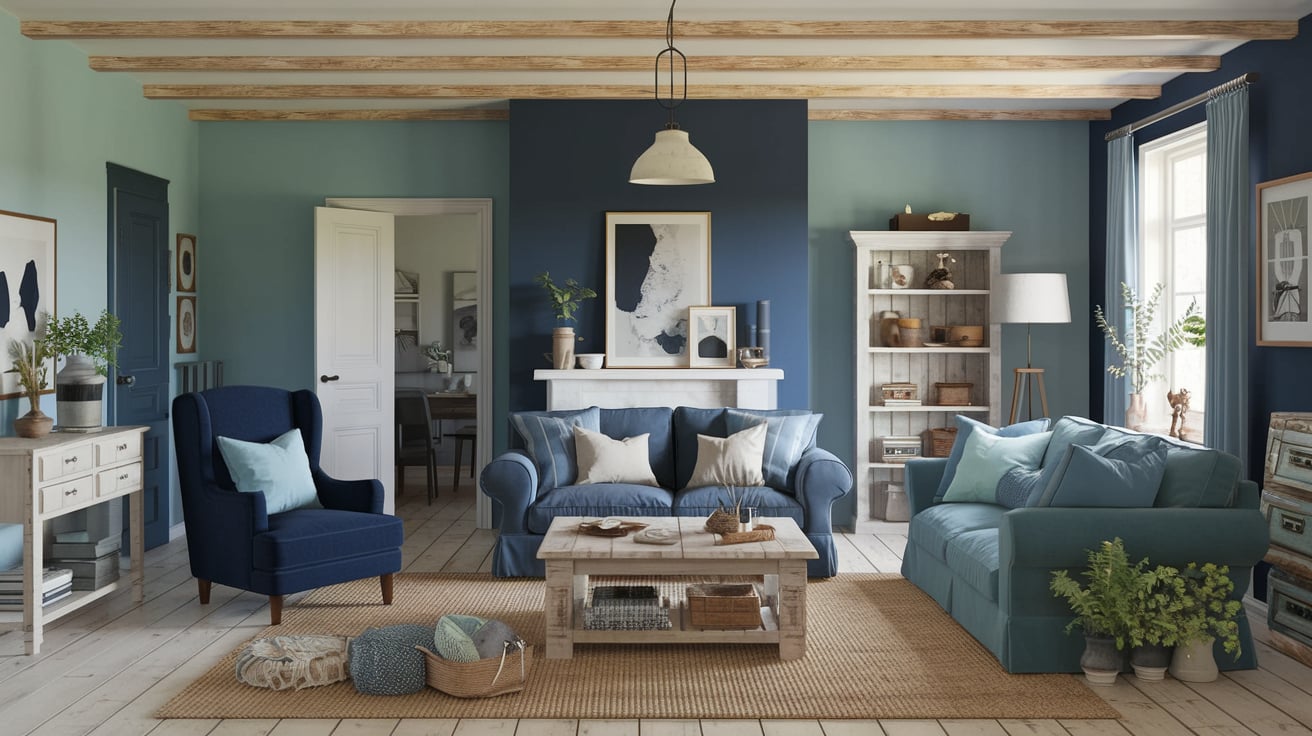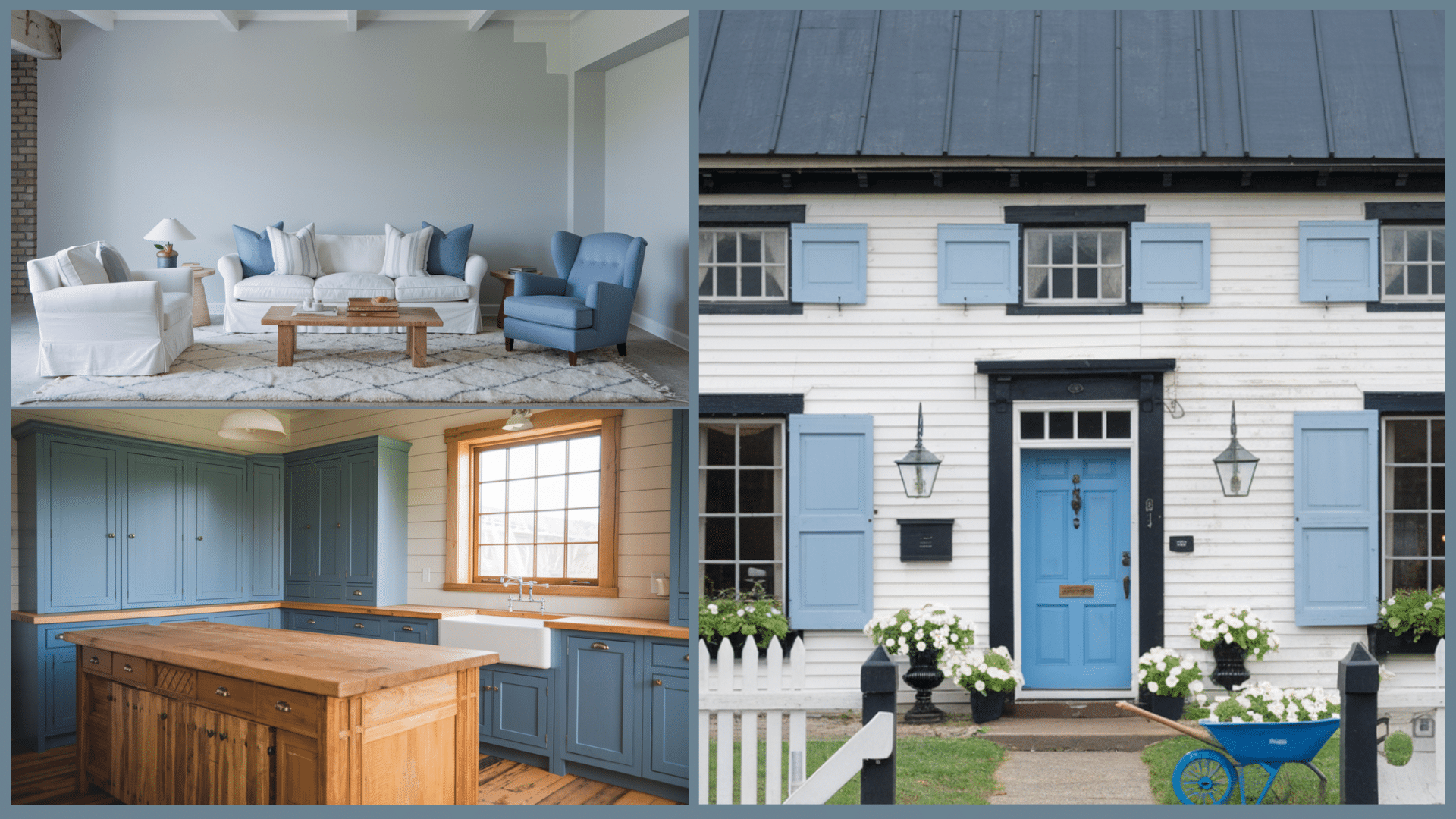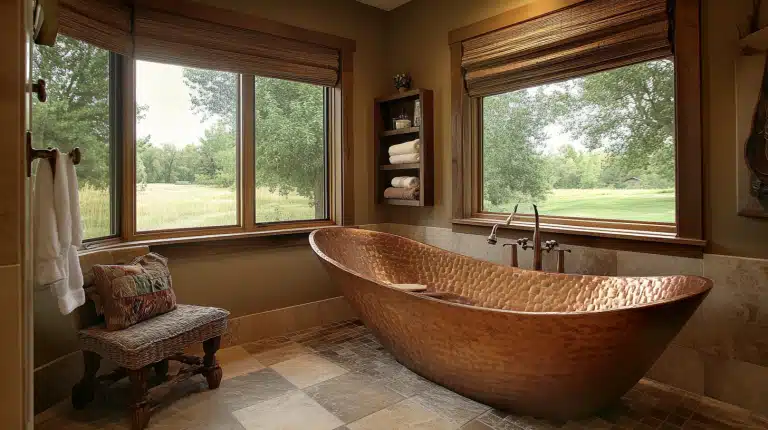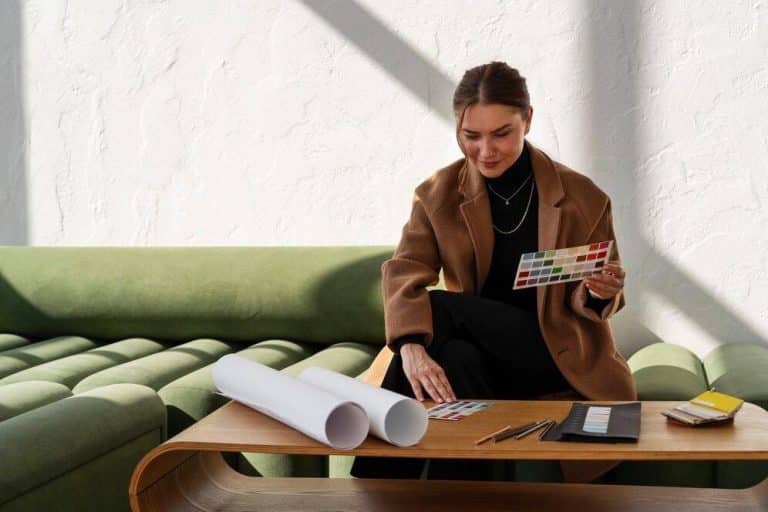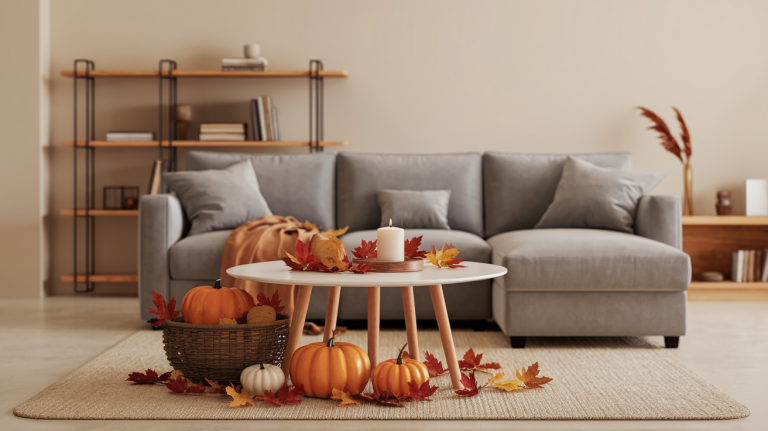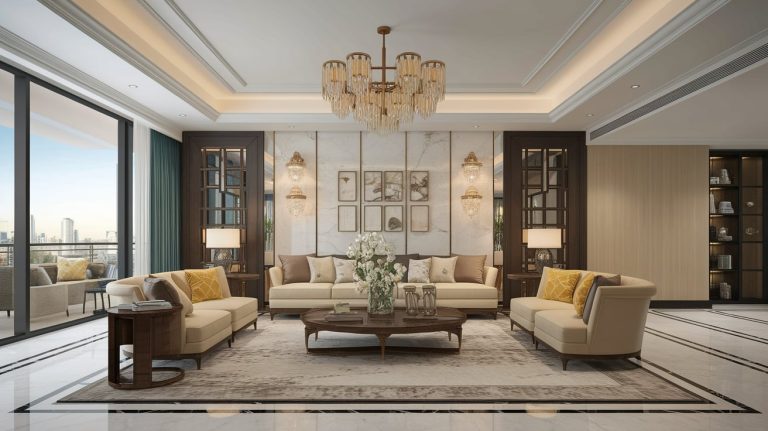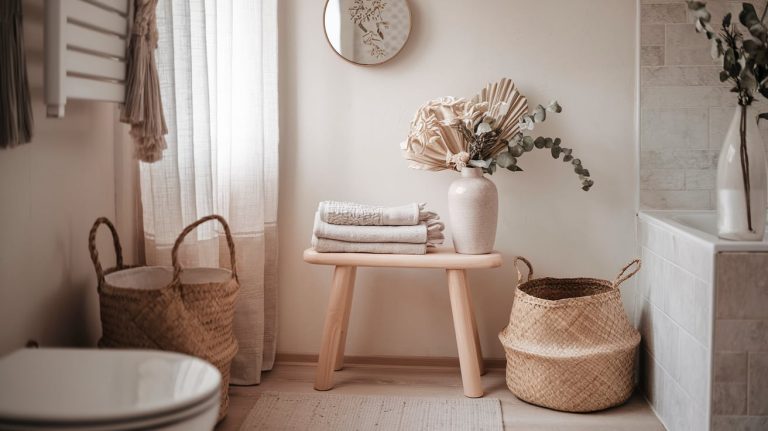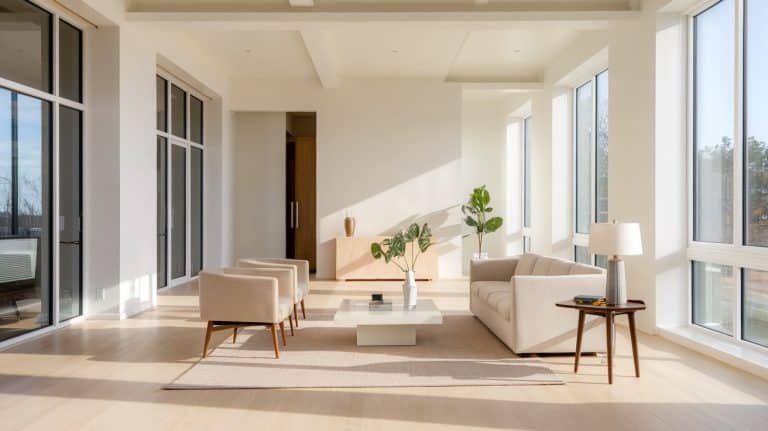The Charm of Farmhouse Blue: A Complete Design Guide
As a longtime admirer of farmhouse design, I’ve found that blue is the secret ingredient that truly boosts this beloved style.
There’s something magical about how blue brings both character and tranquility to farmhouse spaces—whether it’s the dramatic depth of Navy or the gentle whisper of Duck Egg.
I’ve created this guide to share my favorite ways to incorporate different blue shades throughout your home.
From creating statement walls to selecting the perfect accent pieces, I’ll walk you through how this versatile color can convert any room into a farmhouse haven.
Join me to explore the many possibilities of farmhouse blue and show you how to create spaces that feel both timeless and uniquely yours.
What Exactly Is Farmhouse Blue?
Farmhouse blue isn’t one specific shade but a family of blues with muted, earthy qualities that perfectly complement rustic elements. These blues typically have gray or green undertones, giving them depth and allowing them to shift subtly as daylight changes.
What makes these blues special is their connection to history—reminiscent of traditional milk paints and natural dyes used in actual farmhouses of the past. They evoke the weathered blue of antique pottery, the soft blue of faded denim, the gentle blue of heirloom quilts, and the chalky finish of aged painted furniture.
Whether deep and saturated or light and airy, farmhouse blue adds realism to spaces, making them feel collected over time rather than newly decorated.
A Deep Dip into Different Shades of Blue
Not all blues are created equal, especially when it comes to farmhouse design. Each shade brings its own personality and transformative power to your home:
Navy Blue: A bold, cultured shade that adds depth and drama. Navy anchors a space with confidence and pairs beautifully with white shiplap or natural wood elements. It’s perfect for creating a focal point in any room.
Duck Egg Blue: A soft, muted blue with a hint of green, creating a serene ambiance. This vintage-inspired hue feels both fresh and timeless, offering a gentle nod to traditional farmhouse visual while maintaining a contemporary feel.
Powder Blue: A pale, airy blue that brings a light, fresh vibe to any room. This delicate shade evokes clear skies and fresh linens, making spaces feel instantly more open and welcoming. It’s the ideal choice for smaller rooms that need to feel spacious.
Slate Blue: A versatile, grayish-blue perfect for adding subtle grace. Neither too bold nor too soft, slate blue strikes the perfect balance for those wanting to incorporate blue without making too strong a statement.
Teal Blue: A more vibrant option that offers a pop of color without overwhelming the space. This energetic shade injects personality while still honoring the earthy, natural palette typical of farmhouse design.
The beauty of farmhouse blue lies in its adaptability—whether you prefer a more traditional approach with muted tones or want to make a contemporary statement with deeper shades, there’s a blue that perfectly aligns with your vision.
The Perfect Partnerships
Blue creates farmhouse magic when paired with these essential elements:
- Sun-kissed, weathered wood that tells a story
- The warm glow of brushed brass against cool blue tones
- Crisp, natural linens with subtle blue stitching or borders
- The textural contrast of galvanized metal containers filled with blue hydrangeas
- The clean backdrop of white shiplap that makes blue elements pop
I’ve found that blue acts as a thread that weaves these farmhouse elements together, creating spaces that feel collected over time rather than purchased from a catalog. It’s this genuine, lived-in quality that makes farmhouse blue so irresistible—your space will feel like it’s been evolving for generations, even if you just started decorating last weekend!
Where to Add Farmhouse Blue in Your Home
Blue is remarkably versatile, working beautifully throughout the home. Here’s how to incorporate it room by room:
Living Room: Cozy Up with Classic Blue
The heart of your home deserves special attention when it comes to color choices.
- Use Navy or Slate Blue for accent walls to create depth and interest without overwhelming the space.
- Incorporate blue through cozy throw pillows, soft blankets, or a statement area rug.
- Consider a blue-toned slipcover for a sofa or armchair—easy to change and perfectly aligned with farmhouse practicality.
The living room offers countless opportunities for blue touches, from painted coffee tables to curated blue-and-white pottery collections displayed on open shelving.
Kitchen: Whisk in Some Blue for Farmhouse Flavor
The farmhouse kitchen becomes even more inviting with thoughtful blue accents:
- Duck Egg Blue cabinets can create a vintage, charming vibe that feels both fresh and nostalgic.
- Powder Blue on the walls provides a soft, inviting feel that complements white cabinetry and butcher block countertops.
- Blue ceramic canisters, tea towels, or a painted island can introduce the color in smaller, manageable doses.
The kitchen is where farmhouse style truly shines, and blue elements help emphasize the welcoming, lived-in quality that makes this design style so enduringly popular.
Bathroom: Make Waves with Blue!
Convert your bathroom into a refreshing retreat with strategic blue elements:
- Teal Blue for a pop of color on towels, rugs, and accessories creates visual interest in an often-overlooked space.
- Consider blue vanity cabinets paired with brass hardware for a look that’s both on-trend and timeless.
- Blue-patterned shower curtains or window treatments can add character without permanent commitment.
The bathroom offers a perfect opportunity to experiment with blue in a contained space before committing to larger areas of your home.
Bedroom: Sleep Tight in Soft Blues
Create a peaceful sanctuary with the calming properties of blue:
- Soft blues like Duck Egg or Powder Blue work wonderfully for creating a peaceful retreat, whether on walls or bedding.
- Layer different blue tones and textures for a soothing, dimensional look that invites relaxation.
- Blue upholstered headboards make a statement while maintaining the serene air essential for restful sleep.
The bedroom benefits tremendously from blue’s psychologically calming effects, making it perhaps the most natural place to incorporate this signature farmhouse color.
Dining Room: Add Some Blue to Your Feast!
Boost mealtime with thoughtfully placed blue elements:
- Slate Blue or Navy Blue accents in chairs or a statement piece of decor can elevate the farmhouse look.
- Consider blue dishware displayed in an open hutch or cabinet for functional decor that enhances the space.
- A painted blue dining table paired with natural wood chairs creates the perfect farmhouse contrast.
The dining room offers wonderful opportunities for mixing materials and finishes in true farmhouse fashion, with blue serving as the perfect accent color.
Mixing and Matching Farmhouse Blue with Other Colors
Creating a balanced color palette is key to a successful farmhouse design. Here’s how to make blue work within a larger color scheme:
Classic Combinations
- Pairing blue with whites, creams, and grays creates a serene, cohesive look that never goes out of style. This timeless approach allows architectural details and textures to shine.
- Adding natural wood tones sweetens the rustic charm, warming up cool blue hues and creating that characteristic farmhouse balance.
- Incorporating black accents (like window frames or light fixtures) with blue and white creates a crisp, defined farmhouse aesthetic.
Creative Contrasts
For those looking to put a personal spin on farmhouse style:
- Using contrasting colors like mustard yellow or burnt orange for a fun, playful twist can make spaces feel more contemporary.
- Green accents (particularly sage) complement blue beautifully, reinforcing the connection to nature that underpins farmhouse design.
- Copper elements paired with blue create a stunning visual contrast while maintaining the earthy quality essential to the style.
The key to successful color mixing lies in consistency—select your blue and complementary colors thoughtfully, then repeat them throughout the space in varying intensities to create a harmonious whole.
Common Mistakes to Avoid with Farmhouse Blue
Even with a color as versatile as blue, there are several pitfalls I’ve learned to avoid when incorporating it into farmhouse design:
- Using too many competing blue tones: While layering blues can be beautiful, having too many different blues without a clear relationship between them can feel disjointed. I recommend selecting 2-3 blue shades that work well together and sticking with that palette.
- Choosing blues with the wrong undertones: Blues can have green, purple, or gray undertones that dramatically affect how they look in a space. Always test paint colors and fabrics in your actual lighting before committing.
- Going too trendy: Some blue shades become trendy for a season but quickly date themselves. For longevity, I suggest choosing classic blues for major elements and reserving very trendy blues for easily changeable accents.
- Forgetting about lighting: Blue can look dramatically different depending on natural and artificial light. Northern-facing rooms tend to amplify blue’s coolness, sometimes requiring warmer blues to balance this effect.
- Creating too-perfect spaces: Remember that the farmhouse style welcomes imperfection and patina. Overly coordinated blue elements can work against the lived-in charm that makes farmhouse style so appealing.
- Neglecting contrast: An all-blue space without contrasting elements can feel flat. Ensure you’re incorporating warm woods, whites, or other complementary colors to create visual interest.
By avoiding these common mistakes, you’ll create blue farmhouse spaces that feel both intentional and authentically charming.
Conclusion
Farmhouse blue transcends mere decoration—it creates spaces with genuine character and timeless appeal.
By thoughtfully incorporating these versatile hues throughout your home, you change ordinary rooms into meaningful havens that honor both tradition and personal style.
Whether you choose the dramatic depth of navy, the serene whisper of duck egg, or any shade between, farmhouse blue grounds your design with historical resonance while remaining remarkably adaptable.
This color family sweetens the essential farmhouse elements—weathered wood, crisp linens, and cherished collectibles—creating that coveted “collected over time” visual.
Remember that the most successful farmhouse spaces balance blue’s coolness with warming elements and avoid over coordination. With mindful application, farmhouse blue creates rooms that feel both restful and genuinely yours—spaces that tell your unique story.
Checking different colors for your home? Please go through our paint color section for more info!

